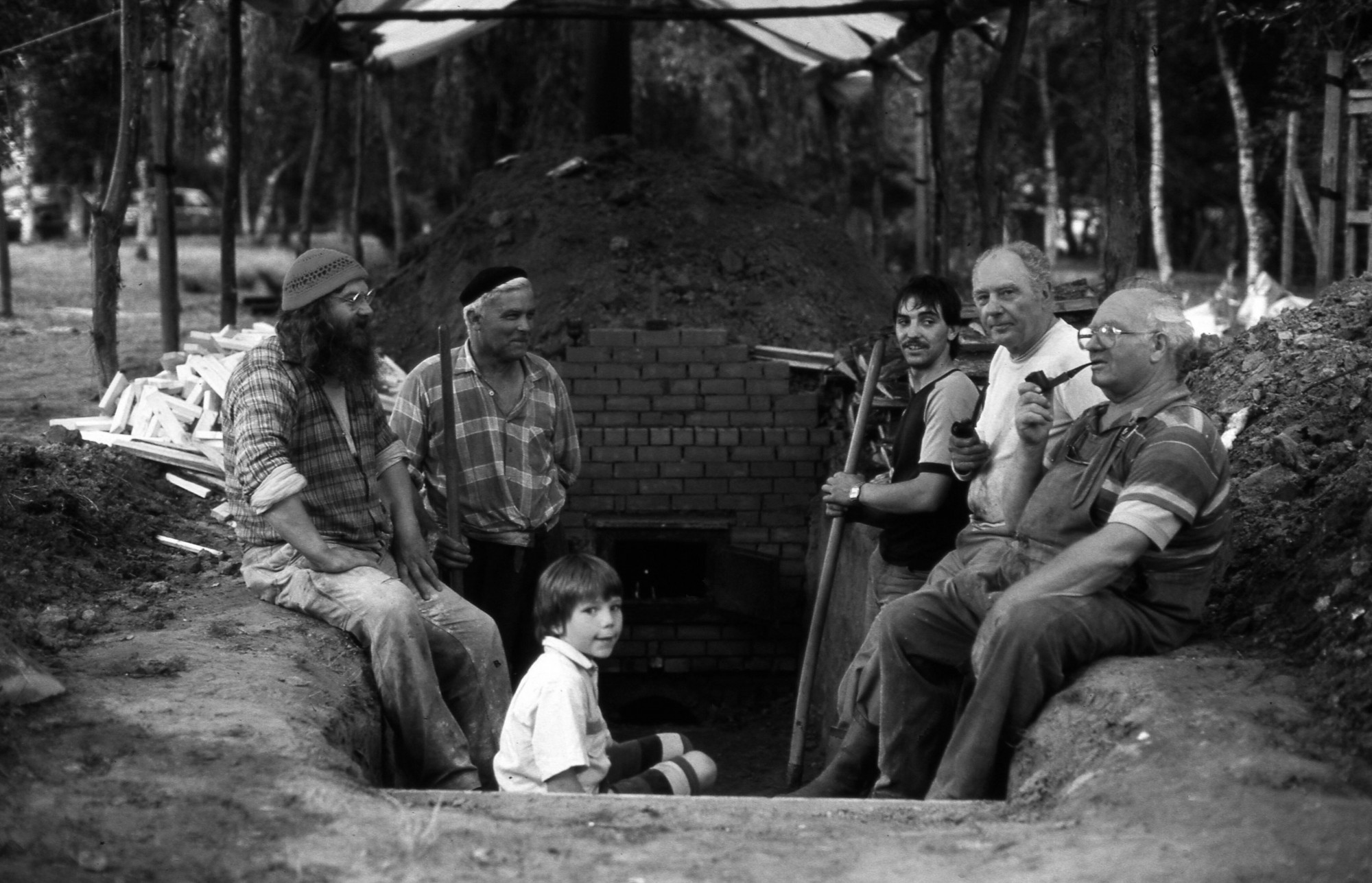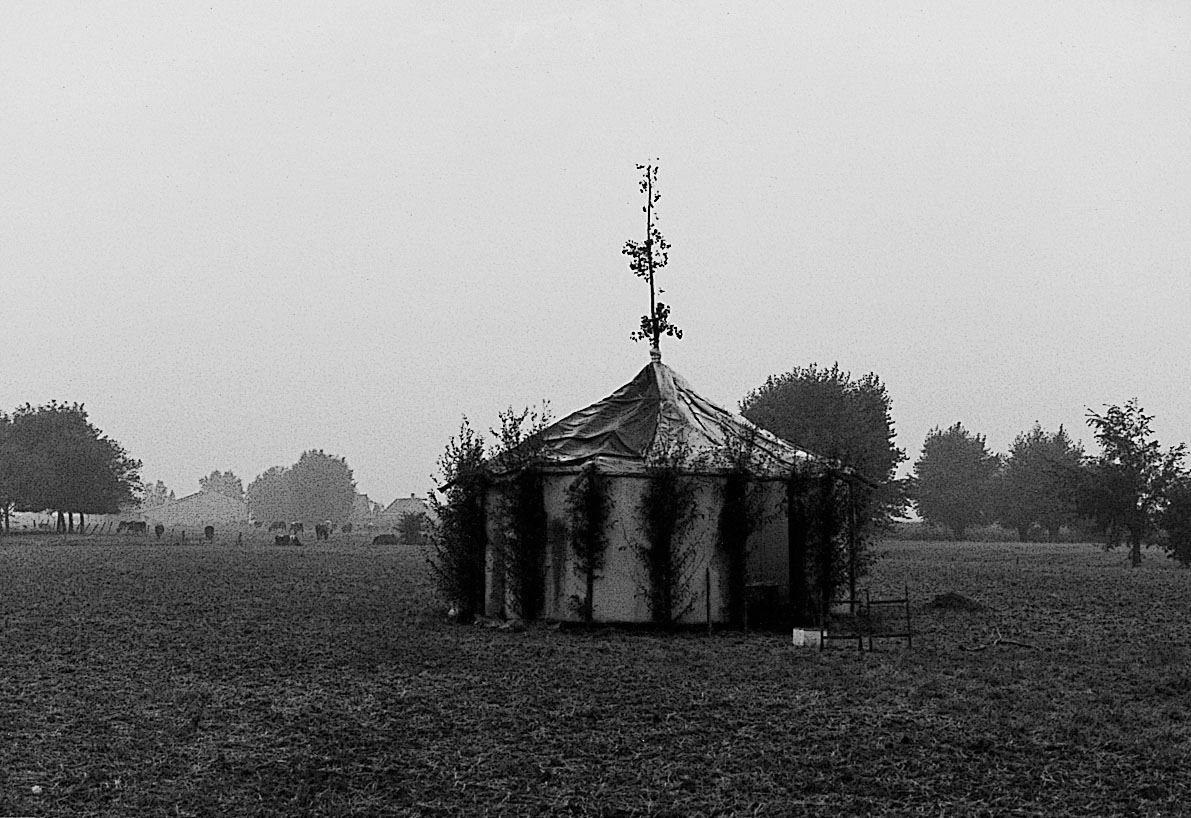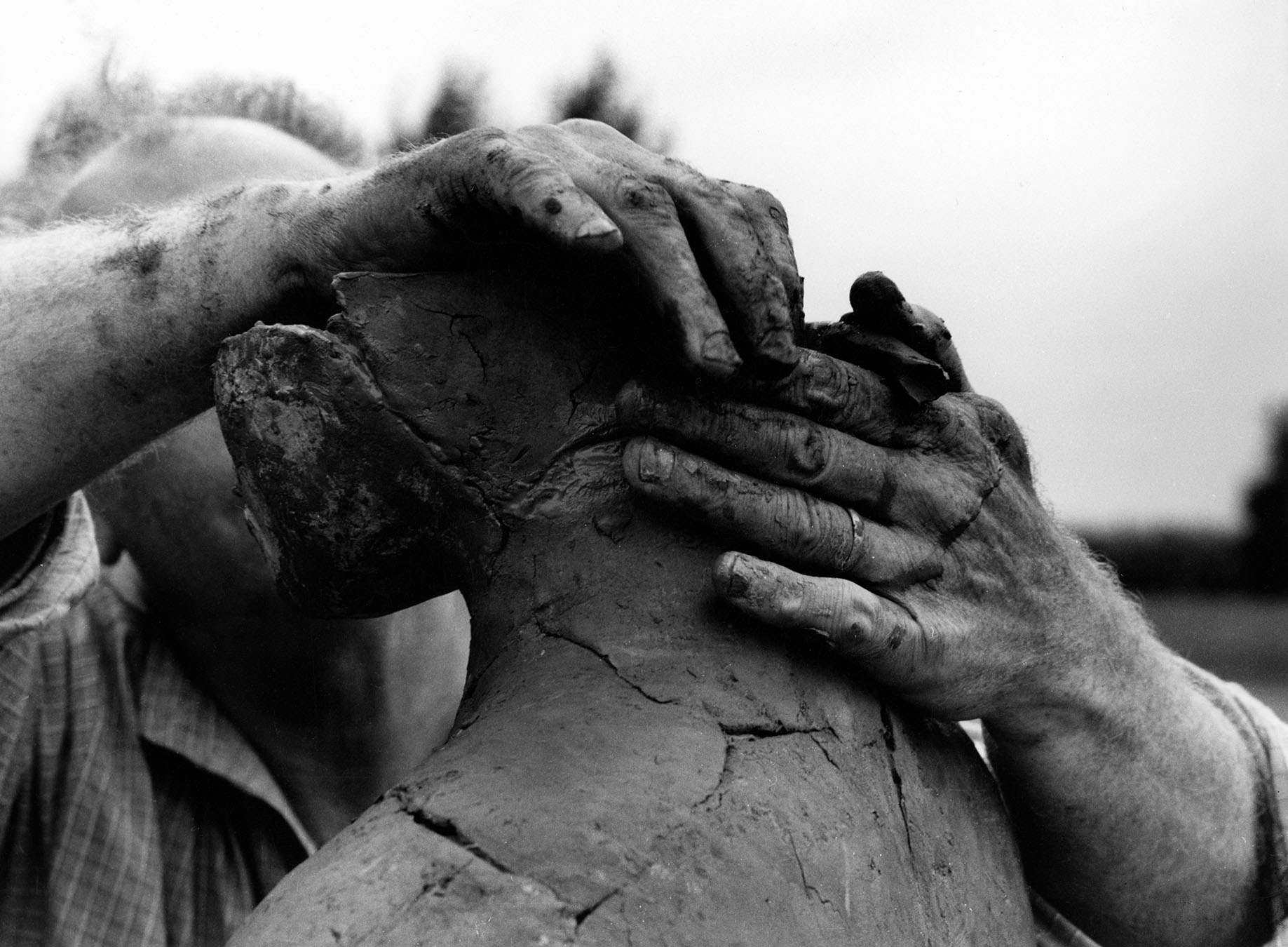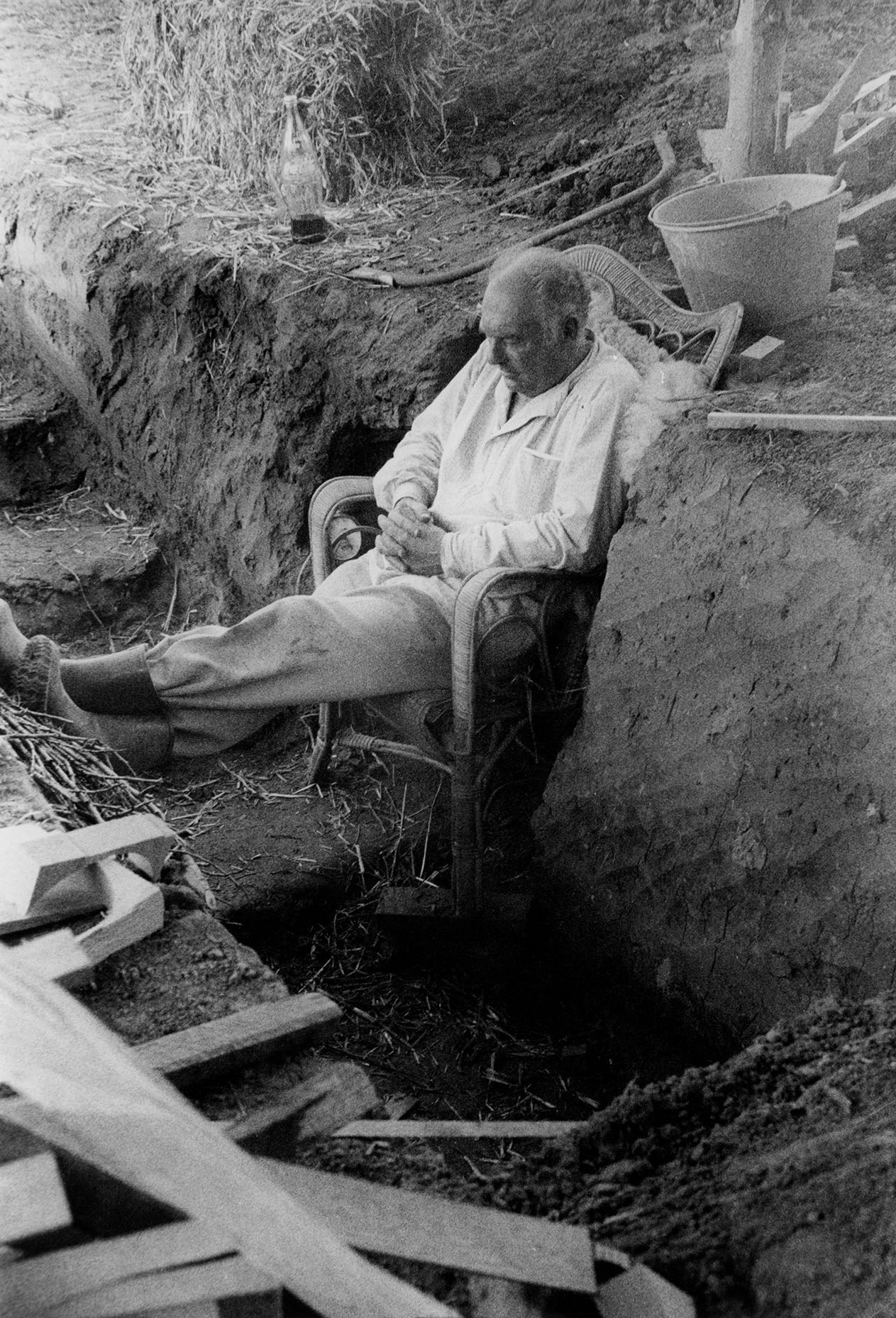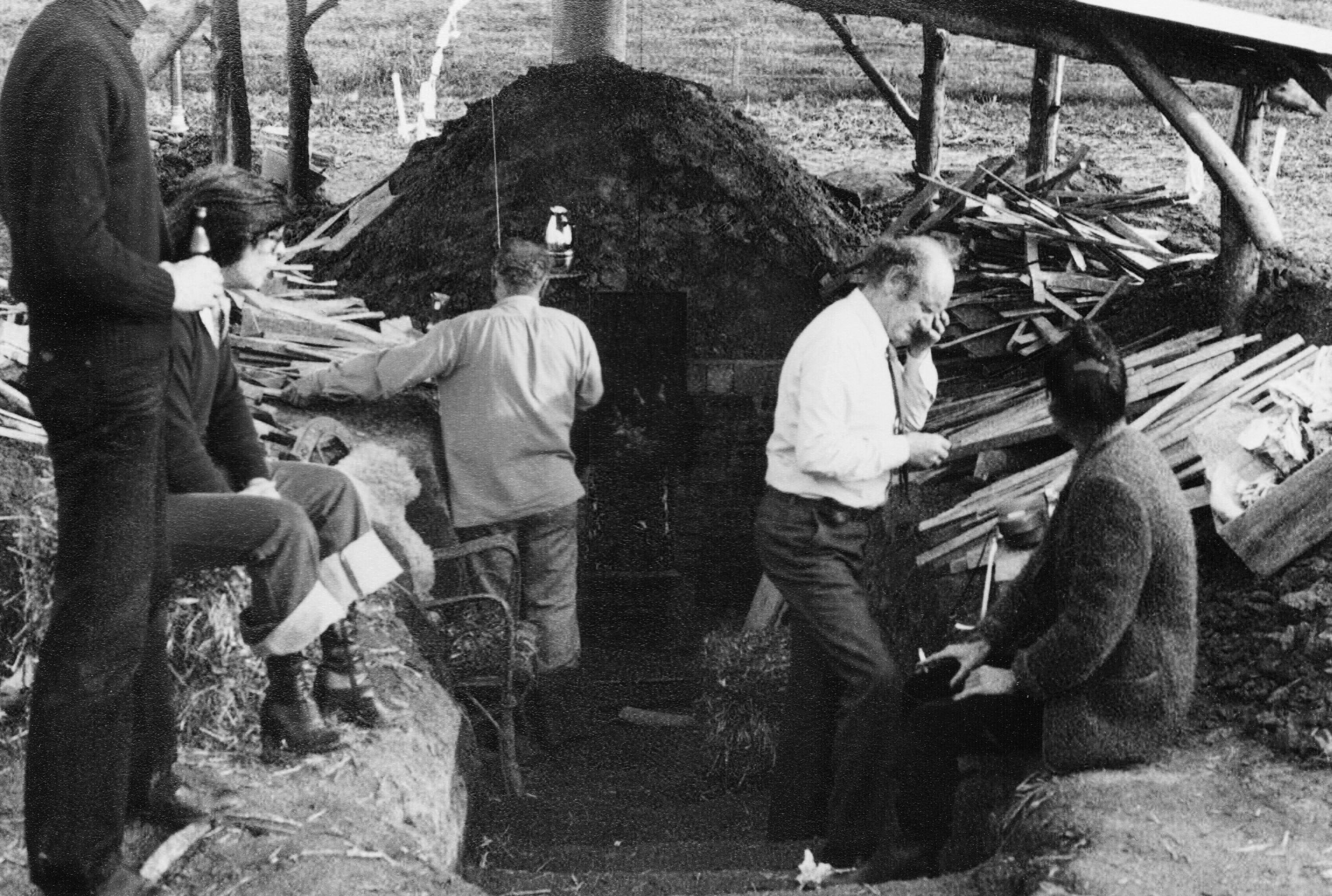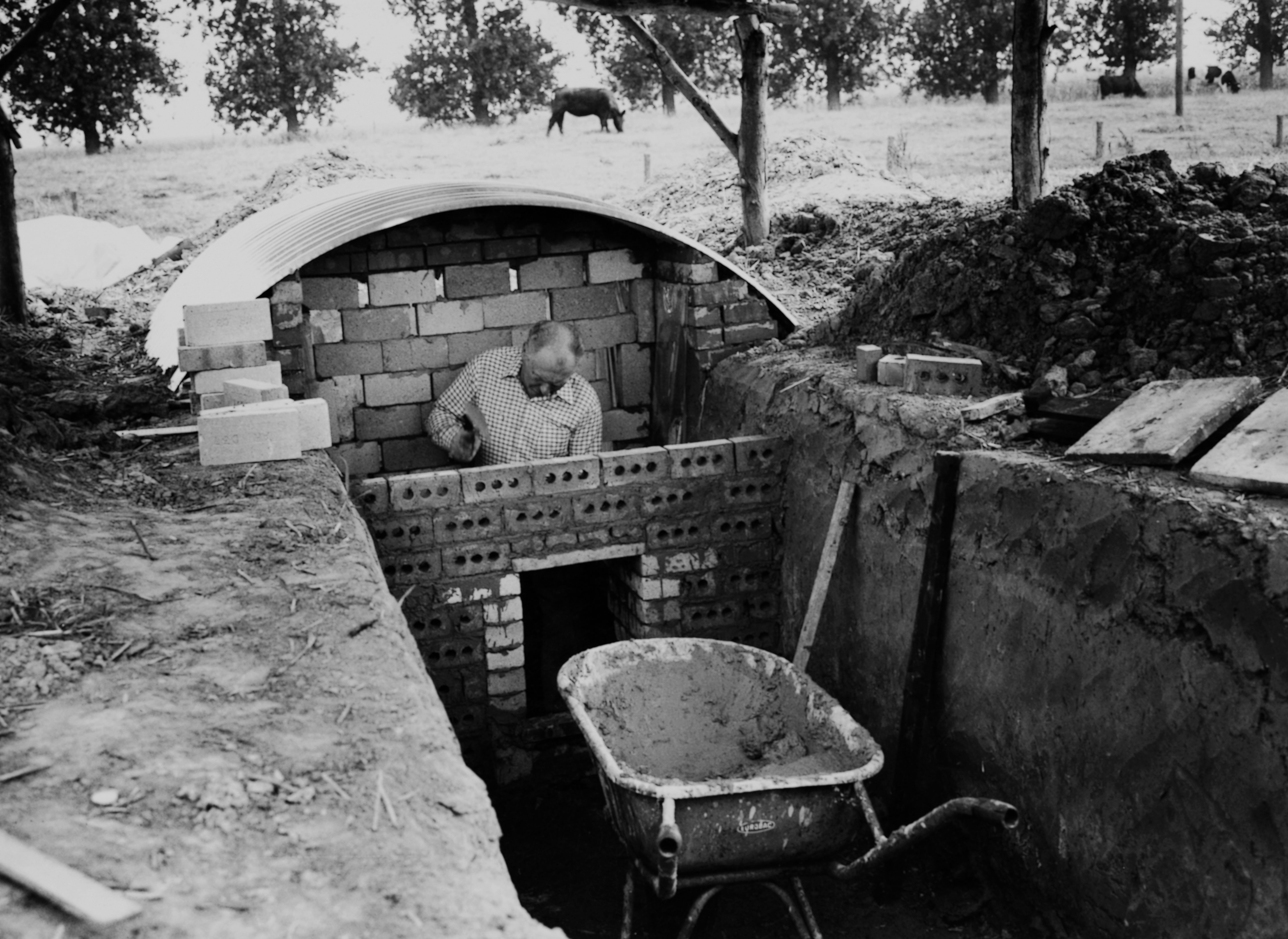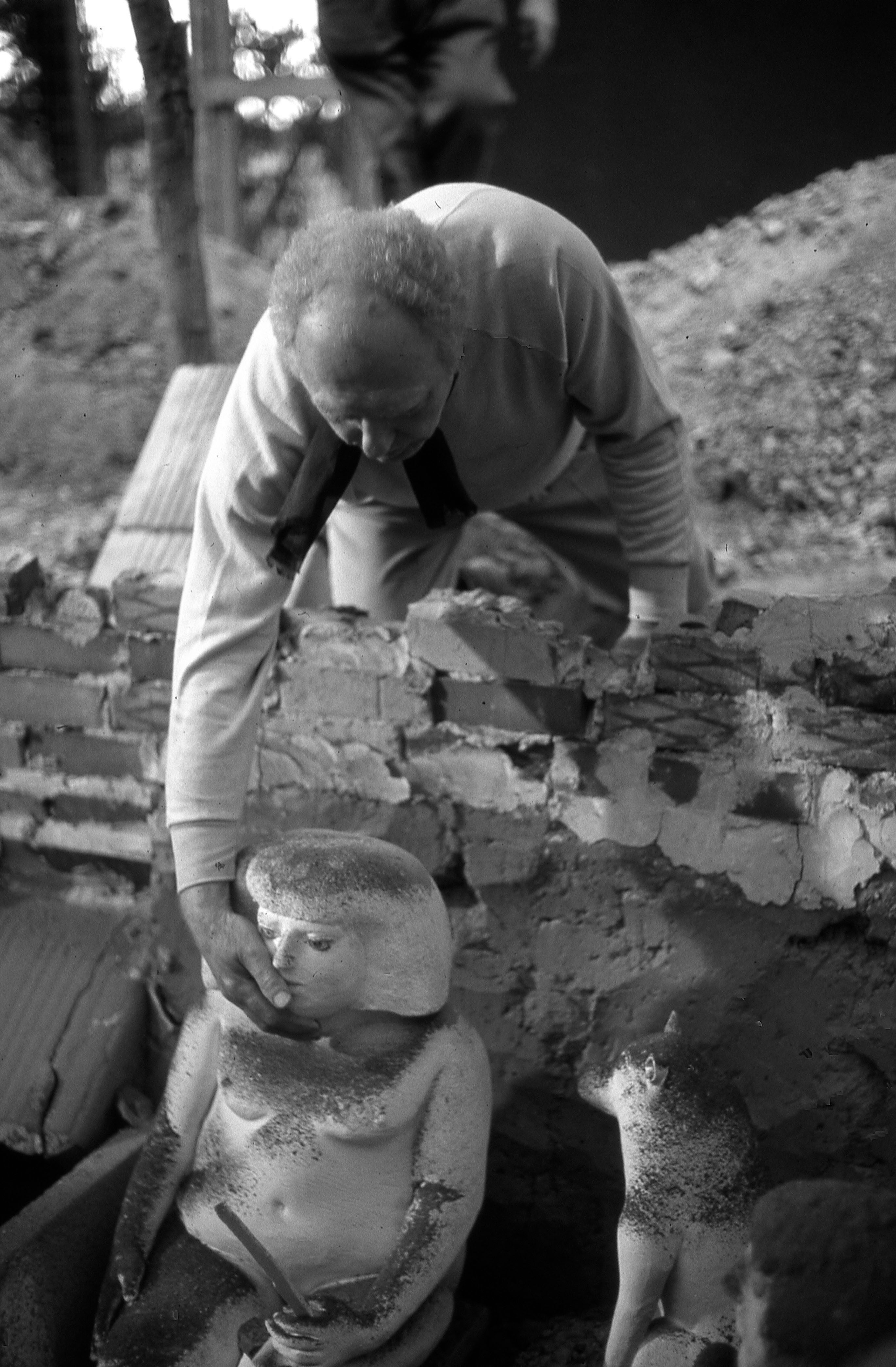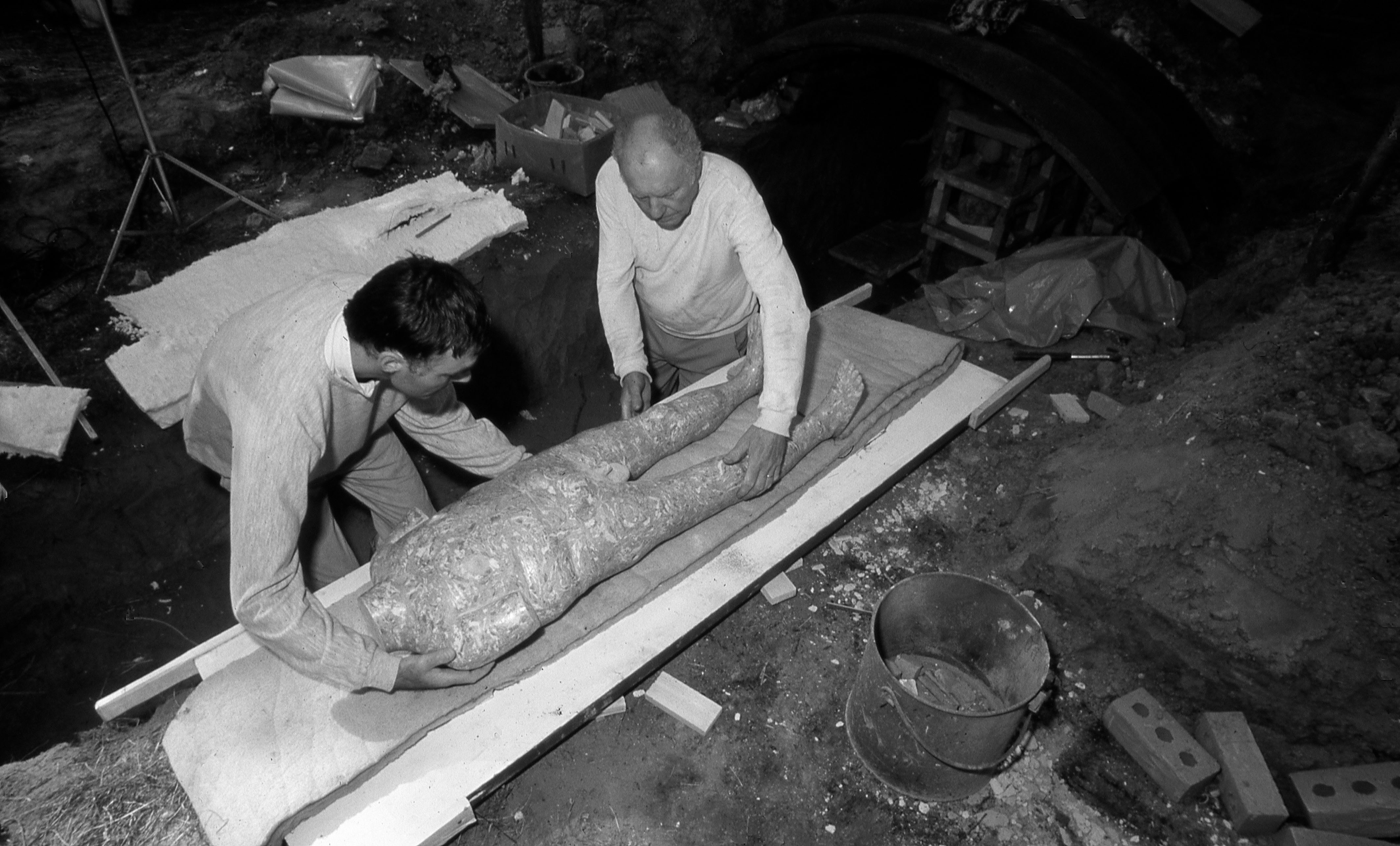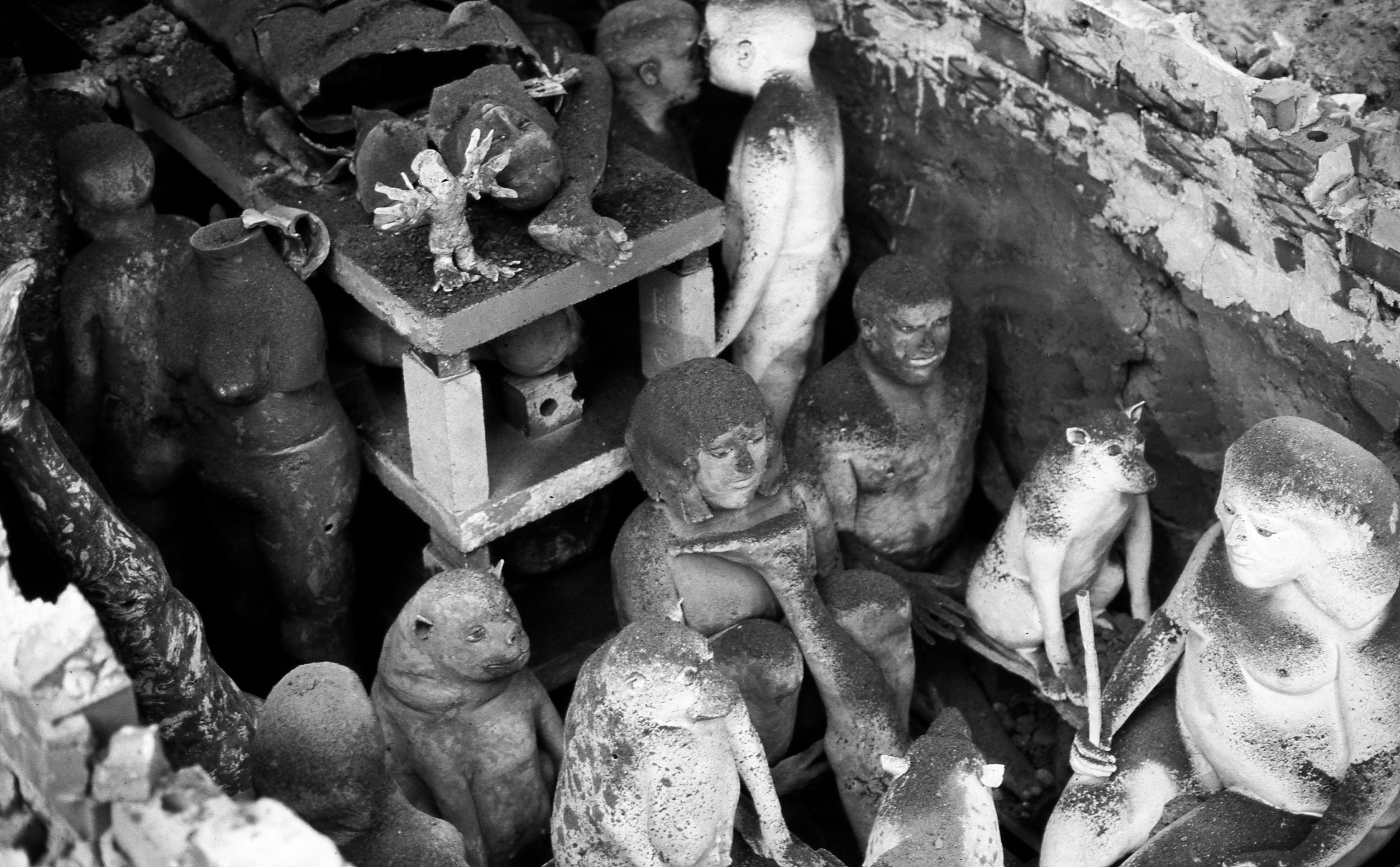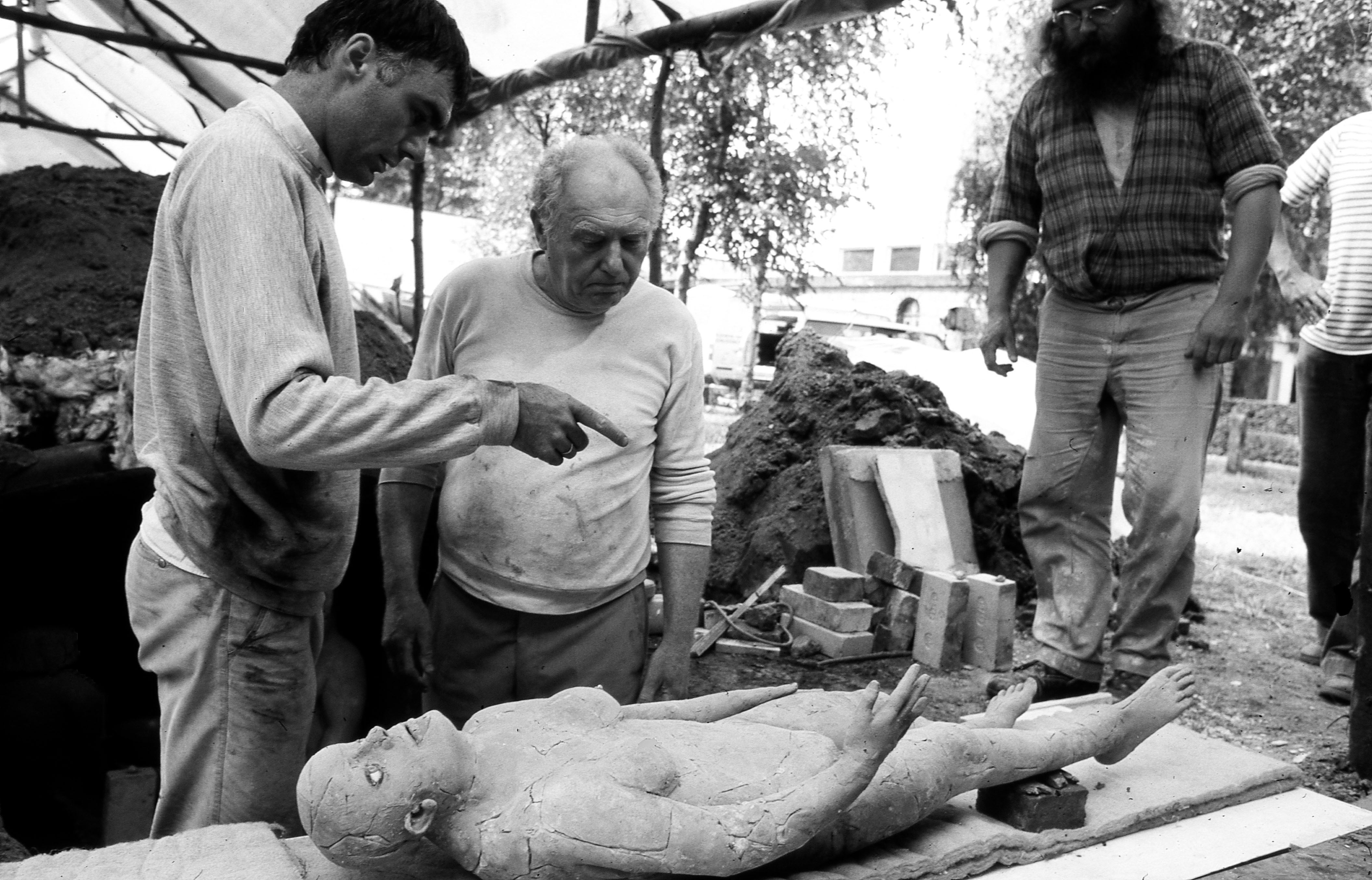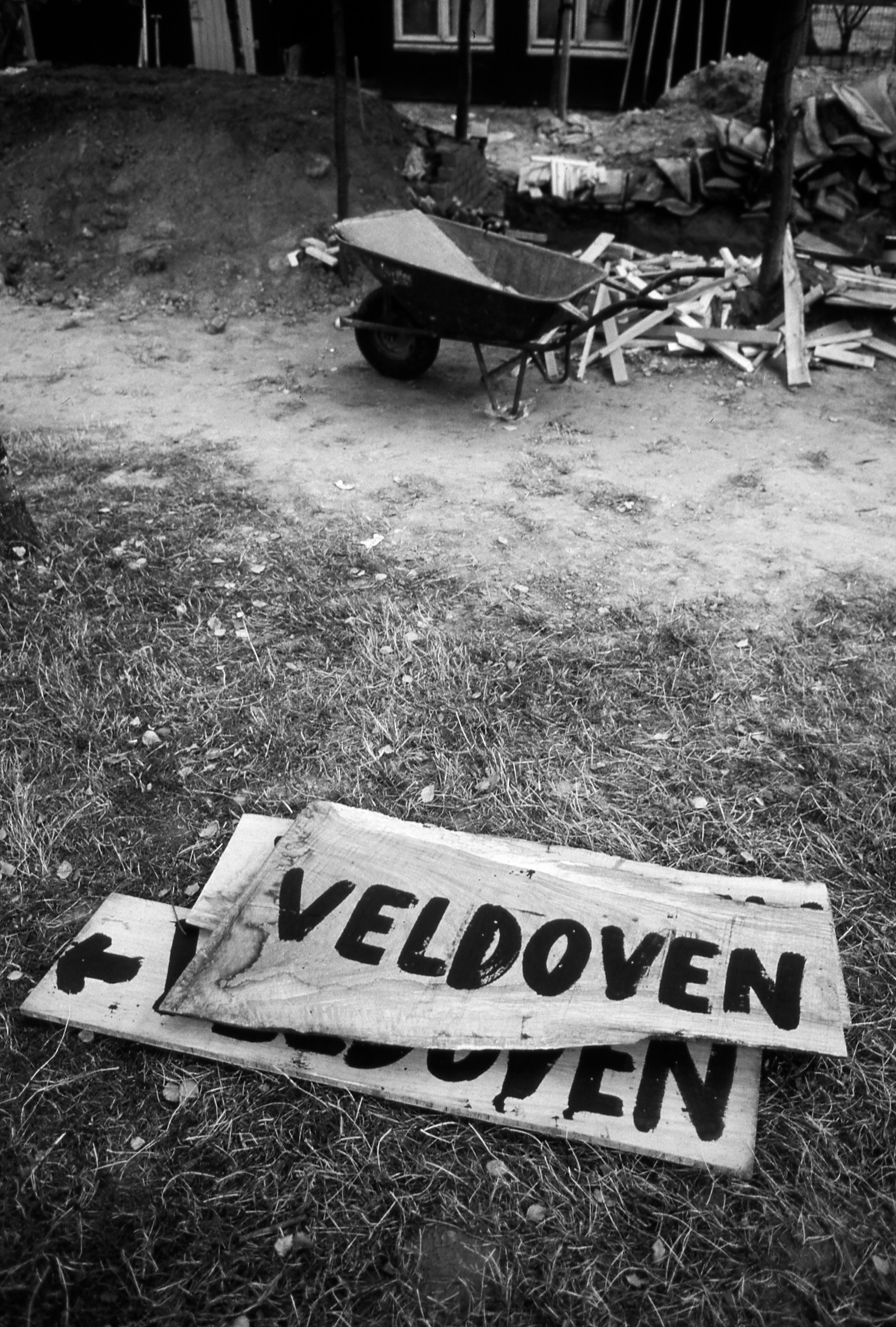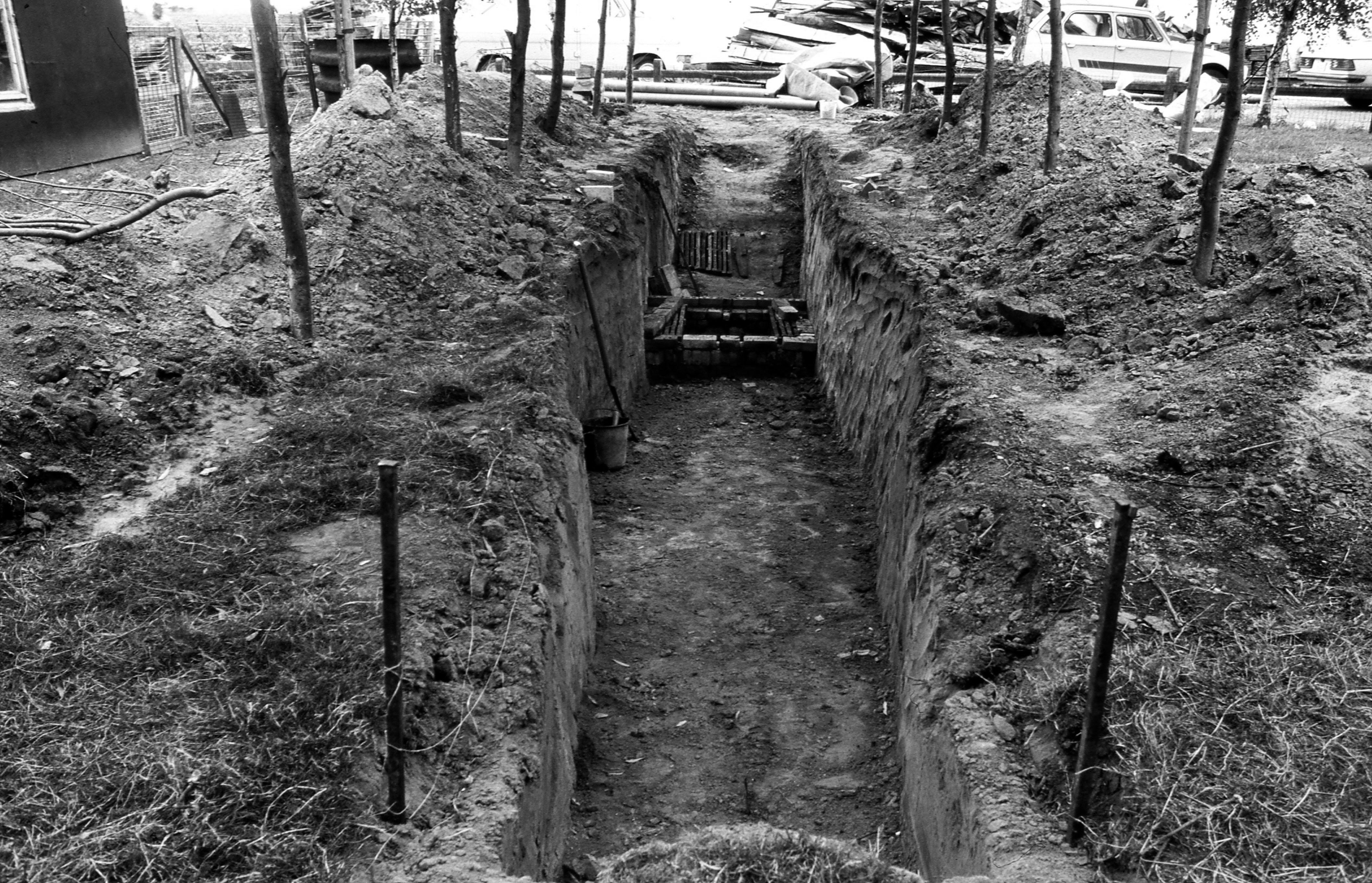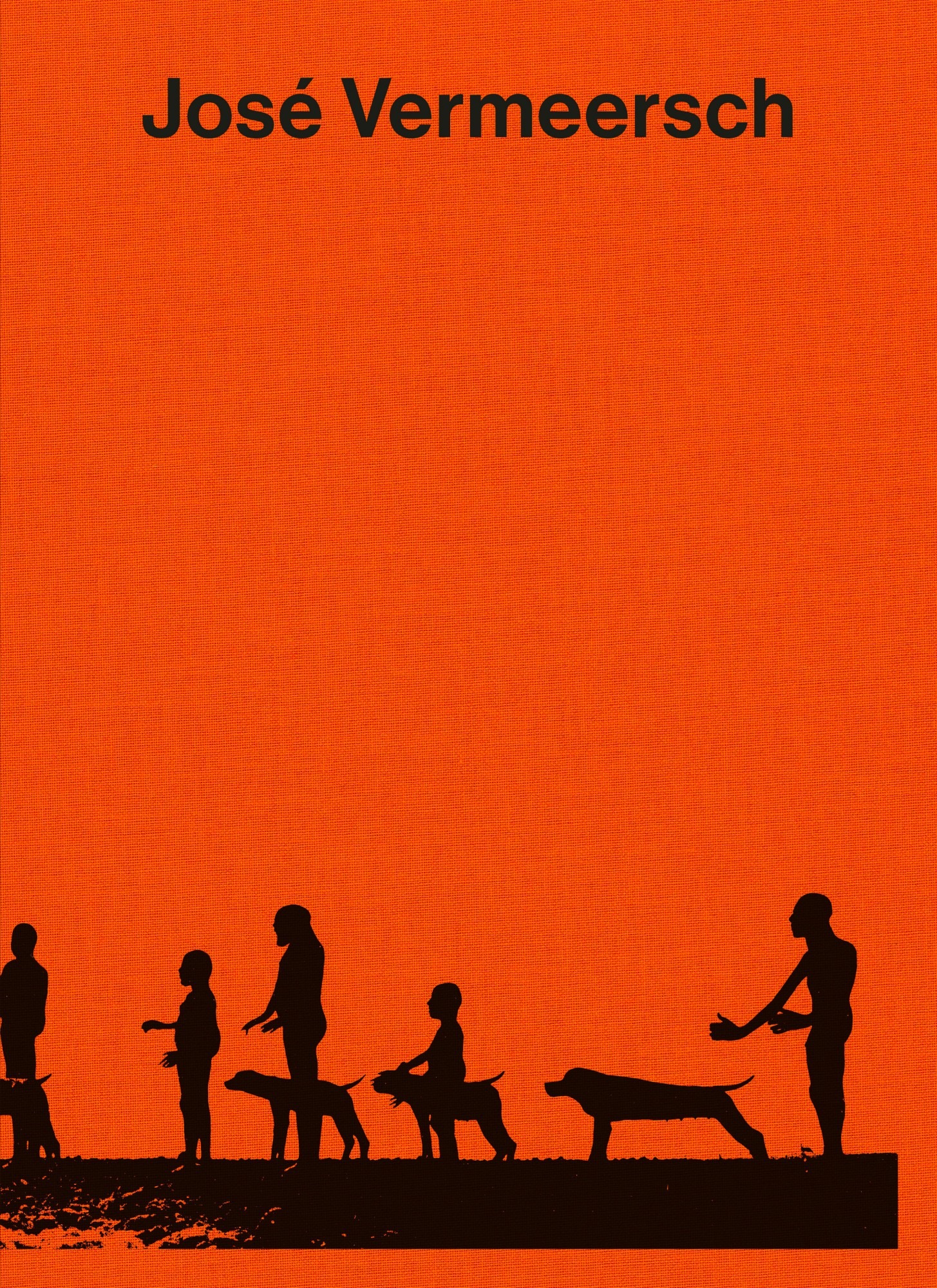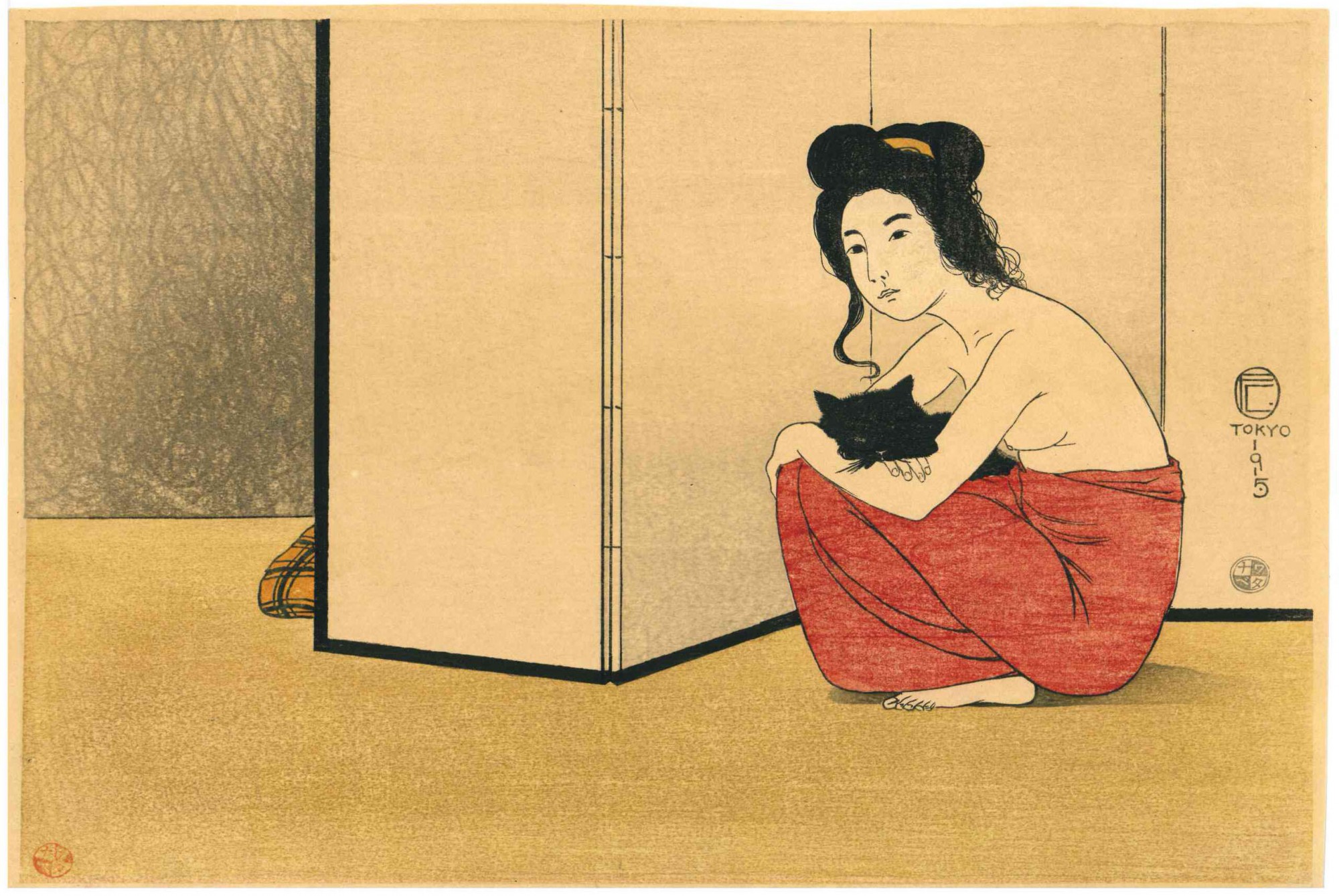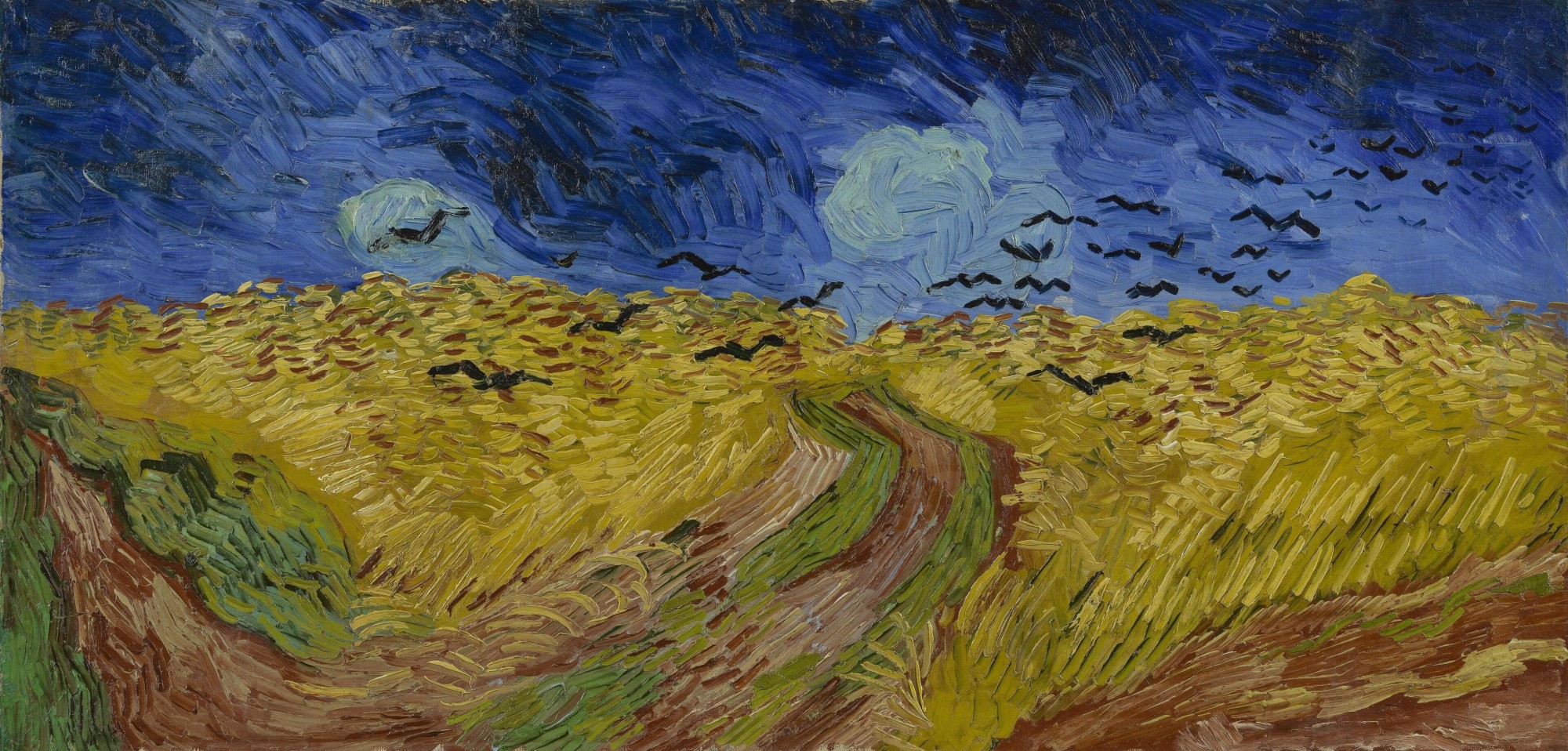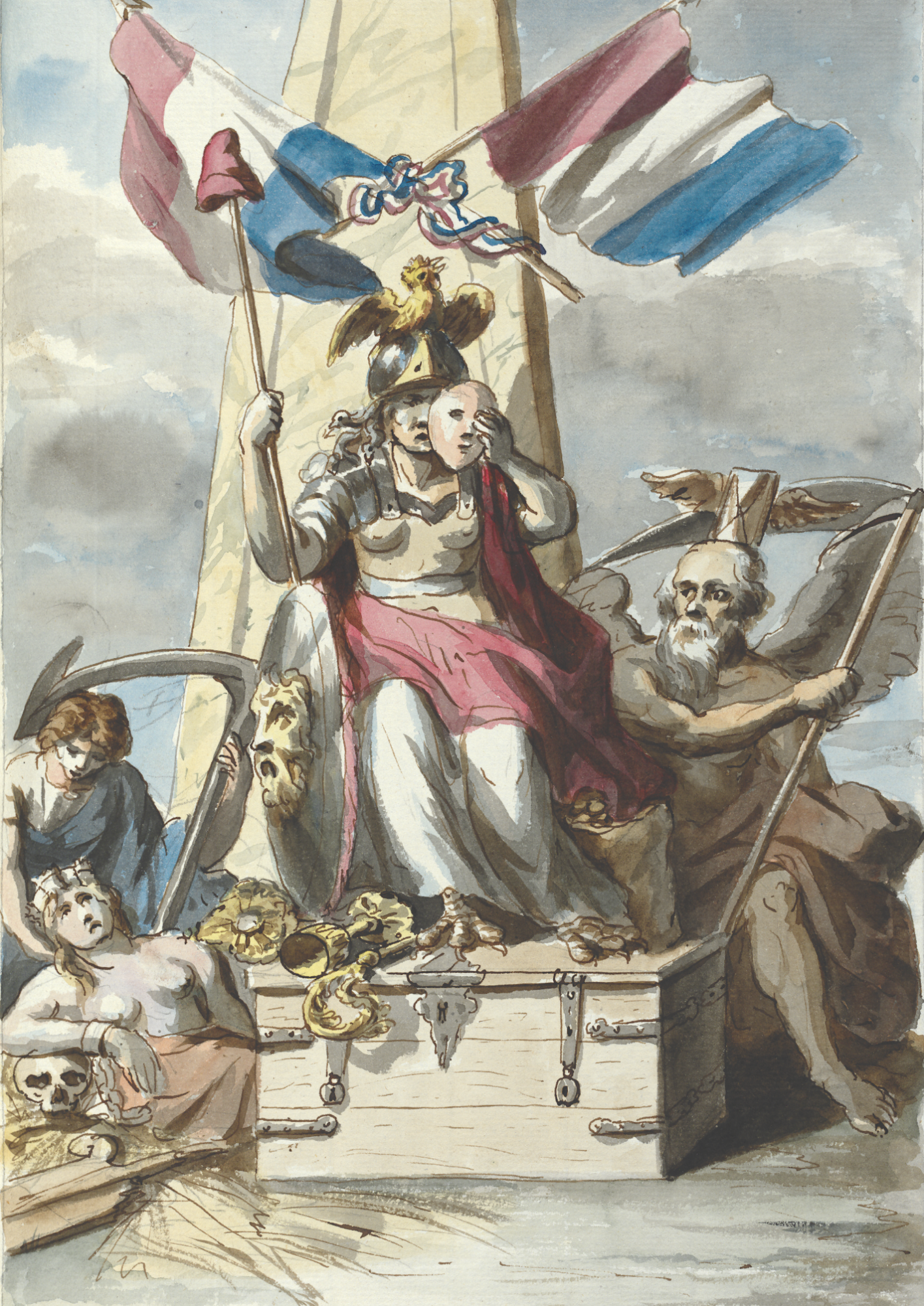"The interdependence of life, nature and work [in José Vermeersch' oeuvre] is marvellously illustrated in the series of archive drawings and photographs made during the construction of two wood-fired kilns for his life-sized ceramics: first in the Reninge countryside in 1979, and a second time in Lendelede in 1985. The process itself was a time of sympoetic creativity and togetherness. The forces of nature, earth and fire enkindling the sculptures all day and all through the night in a kiln built by the artist, melding with the collective experience of local rural folk, friends and family in an atmosphere of ritual and festivity: ‘This inspiring natural process will become a permanent feature. Filmmakers and authors will follow the event day by day. We will celebrate the firing of the kiln with friends, while […] listening to music and poetry in the open air.’ (Artist’s note for the Herfstkamp (‘Autumn Camp’) set up for the Reninge kiln in 1979.) A small monster with tentacle-like hands, the (pagan) ‘God of the Kiln’, protects the sculptures during the approximately 30 hours it takes to fire them at 1,000C°, amid the excitement of the day and the crackling fire in the quiet of the night, all while the artist tended to the flames."
From the essay 'Presence Detached from all Culture' by Lilou Vidal (Presences, Ludion, 2022).
In the archive of José Vermeersch
